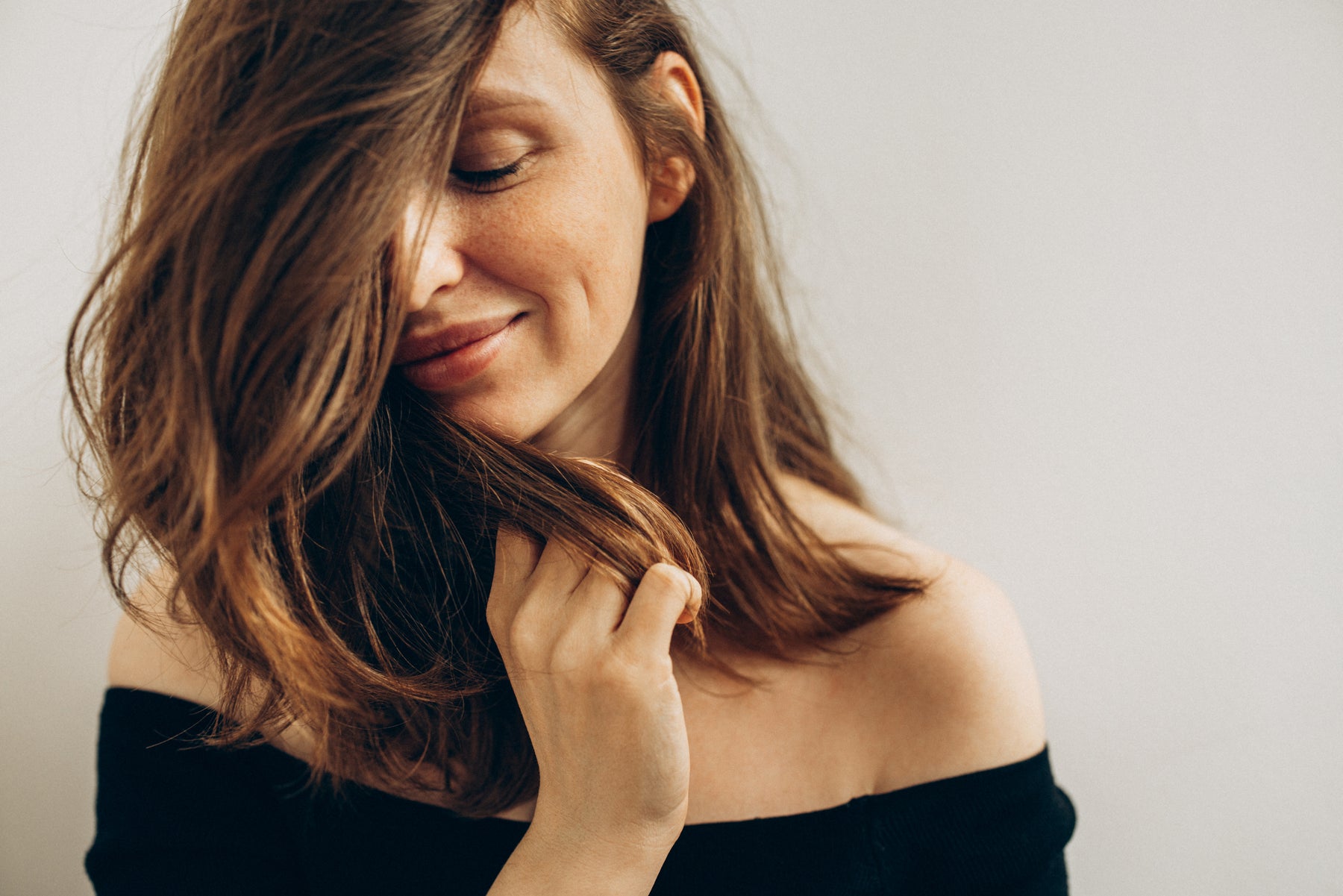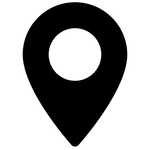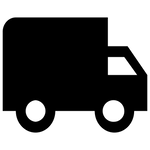
Skin & Hair Harmony
A decade ago, skin and hair supplements were almost unheard of, overshadowed by creams, powders, and soaps. Now, they're at the heart of beauty routines, linking diet directly to beauty. With our experience in supplements, we want to blend it with modern research to guide you towards optimal skin and hair health. Read on if you want to learn more.
What IS hair and skin, anyway?
The most helpful way to start this kind of discussion is some detail on the subject to give us context for later conclusions.
Starting with skin: there’s a lot you can talk about when it comes to skin – the layers that compose it, how hair follicles are placed (or not placed), the kinds of glands that produce various skin oils, and so on.[1] We won’t have the space to cover all of it here, but we can focus on what’s important.
Skin is the largest organ of your body. It is responsible for your sense of touch, it acts as an immune barrier against disease, it regulates your internal temperature through sweat, and more. It’s made of 3 sections as a whole – the epidermis, the dermis and the hypodermis. To show you how uncomplicated biologists can be sometimes, these fancy names translate to “over skin”, “skin” and “below skin”. The epidermis is your general protective layer that uses oils and molecules of the immune system to keep moisture in and bacteria out. The dermis has most of your connective tissue and nerve endings that detect things like touch and heat. Finally, the hypodermis is technically NOT skin, but it DOES connect your skin to muscle and bone, using adipose (fat) cells as an intermediary.[2]
Mostly in the dermis layer, are the proteins collagen and elastin. Collagen is especially important because it makes up over 30% of all protein made in the body, with your skin being a large part of that.[3] You can think of it as a nylon-like structural protein, that allows your skin to bend and change its shape without breaking or tearing. On the other hand, you have elastin, which is the elastic protein that allows your skin to retain its shape, and is a very important part of preventing wrinkles.
When you’re young, your collagen and elastin production is at its peak – your skin remains tight and wrinkle-free, usually with minimal effort on your part. However, as you age, your production of both these proteins begins to decline, with the addition of other factors like poor nutrition, smoking, and sun damage (UV radiation), this results in the appearance of wrinkles and fine lines that didn’t used to be there.[4] This is because all of these sources of damage will slowly fragment the existing collagen. These fragmented collagen fibers can’t hold fibroblasts – cells responsible for making new collagen. Over time, it reduces the total collagen content in your skin and worsens overall skin health.[5]
This gives us our main goal: maintaining our production of collagen and elastin.
With all that said, let’s bring our attention to hair: what it is, and what we need to do.

The part of hair that you see is known as the hair shaft, it’s made of dead cells composed of keratin (a protein that also makes up your nails – so this might be doubly useful!). It has 3 main parts: the medulla, which is the center of the shaft, the cortex, which gives your hair most of its properties - like its strength, its qualities, an even its colour. Finally, there’s the cuticle, which forms the outer layer.[6]
The shaft, and the keratin protein it requires, are produced by the other main part of your hair – the hair follicle. The follicle sits in both your dermis and epidermis while being fed by connecting veins and arteries in the hypodermis. The parts of the follicle are many, but the one we care about is the bulb, which is the part that makes our hair. It receives signals from other parts of the structure that take stems cells in the structure and tell them exactly what to become and where to go. These cells, now known as keratinocytes, will go to their assigned spot, flatten into the proper shape, and die (we call these Keratinized cells).[7]
This process happens at the base of the shaft, and pushes the visible hair upwards with every cell added. This process is cyclical, with periods of growing, recessing and resting.[8] These cycles, and even your overall hair health are dependent on a number of factors. For example, lacking nutrition in the form of protein intake will not supply your bulbs with enough protein to manufacture hair at its normal rate.[9] In fact, 3 important amino acids for hair growth are glycine, cysteine and proline. And if, for instance, your diet lacks cysteine, then it might negatively impact your hair health.[10]
Traditionally, ageing hair has been treated as a fact of life, but new understanding demonstrates that the reality to it might be a bit more complex.
First, the loss of colour in one’s hair is caused by losing the ability to infuse them with melanin or other pigments formed in cells called melanocytes.[11] These cells will add colour to our hair, and their gradual loss over time is attributed to graying hair. This might lead you to the question: Why are they lost over time? One theory suggests a simple answer: oxidative stress. Producing melanin releases a lot of Reactive Oxygen Species (ROS), you may have heard of them as free radicals, which are highly reactive oxygen molecules that can attack and break anything – cells, molecules, proteins, and more.[12]
These ROS need to be disarmed by a strong antioxidant system, which you know if you read our Hormone Health article, is a system that weakens with age. This weakened antioxidant protection, combined with other stressors of age and life, lead to graying of hair.
Hair thinning, on the other hand, might be a bit more overall complex, so that would have to be a topic for another time. But, what we can say is that genetics, stress and ROS play a major role in that as well, along with inflammation. Knowing this, and what we discussed above, we have our targets – maintain hair thickness and colour through preserving antioxidant and anti-inflammatory mechanisms, while supporting keratin production.
What should I take, then?
Now that we’ve gained context about how both skin and hair work at their mechanical level, we can start to have a more centered discussion about what we can do to improve our skin and hair health.
The strongest data we have on the topic of hair health, is to look at nutritional factors we know contribute to poor hair health, and help you take measures to avoid them.
For example, many enzymes rely on zinc in order to carry out their tasks, and it seems a lack of zinc will lead to patterns of hair loss. So, if you are prone to zinc deficiency, like in cases of veganism/vegetarianism, then additional zinc in your diet might improve hair health.
Other nutrients of this kind include Omega-3 fatty acids, Vitamin D, Vitamin E, overall protein intake, and possibly even selenium.[13] Some evidence shows that Vitamin B12, and folic acid deficiencies can be looked at as possible contributions to premature greying hair.[14] Collagen might also be a beneficial addition to your diet, as there is some evidence that collagen intake might improve hair health in areas like hair shedding.[15], [16]
Another helpful nutrient for hair health seems to be having a rich and diverse intake of antioxidants. Some studies that include vitamins A, C, E and even pycnogenol might be a way to protect against oxidative damage – especially from sunlight, in addition to other methods like shampoos, creams and sunscreens.[17],[18] While the ones explicitly studied were those we highlighted above, it stands to reason that other, more potent antioxidants, like resveratrol or antioxidant blends, might also contribute positively to hair health.
Let's shift gears and move on to skin health!
Collagen is an excellent supplement for your skin, with quite a bit of evidence behind its effectiveness at improving skin health – it reduces appearance of wrinkles and roughness, while improving skin moisture, and elasticity.[19] It seems to do this by providing the raw amino acids needed to supply collagen production, which results in thicker and denser collagen that will improve overall skin health.[20]

Antioxidants are also great for your skin health. This is because they protect against oxidative damage that your skin might be subject to from things like sunlight, environmental toxins, normal functions, and more.[21] Well-investigated antioxidants for skin health include Polyphenols and specifically Flavanoids (a kind of polyphenol), which you can find in foods like berries, tea, spices, nuts, cocoa and a variety of other foods.[22] Some supplements like Turmeric and French Maritime Pine Bark extract also are high in polyphenol content, which contributes to improving your skin health.[23]
So what’s the main takeaway?
This was a lot of information all at once, but you can boil down a lot of this technical stuff into a few key pieces of advice. Get plenty of antioxidants, eat healthy, get all your protein in (this includes collagen), vitamins and minerals, and keep your stress as low as possible and you’ll probably see some big changes in the look of your skin and hair! Not only that, but this is also some great advice for feeling and being healthier too, and that’s no coincidence.
References:
[1] https://www.ncbi.nlm.nih.gov/books/NBK470464/
[2] https://www.ncbi.nlm.nih.gov/books/NBK470464/
[3] https://www.ncbi.nlm.nih.gov/pmc/articles/PMC3003457/
[4] https://www.ncbi.nlm.nih.gov/pmc/articles/PMC7146365/
[5] https://www.ncbi.nlm.nih.gov/pmc/articles/PMC10409944/
[6] https://www.ncbi.nlm.nih.gov/books/NBK499948/
[7] https://www.ncbi.nlm.nih.gov/books/NBK499948/
[8] https://www.ncbi.nlm.nih.gov/books/NBK546248/
[9] https://pubmed.ncbi.nlm.nih.gov/25128118/
[10] https://www.ncbi.nlm.nih.gov/pmc/articles/PMC6017824/
[11] https://www.ncbi.nlm.nih.gov/books/NBK499948/
[12] https://www.ncbi.nlm.nih.gov/pmc/articles/PMC6290285/
[13] https://www.ncbi.nlm.nih.gov/pmc/articles/PMC5315033/
[14] https://www.ncbi.nlm.nih.gov/pmc/articles/PMC6290285/
[15] https://www.ncbi.nlm.nih.gov/pmc/articles/PMC3509882/
[16] https://pubmed.ncbi.nlm.nih.gov/27506633/
[17] https://pubmed.ncbi.nlm.nih.gov/16185284/
[18] https://pubmed.ncbi.nlm.nih.gov/17803593/
[19] https://www.ncbi.nlm.nih.gov/pmc/articles/PMC8824545/
[20] https://www.ncbi.nlm.nih.gov/pmc/articles/PMC8824545/
[21] https://www.ncbi.nlm.nih.gov/pmc/articles/PMC10364564/





